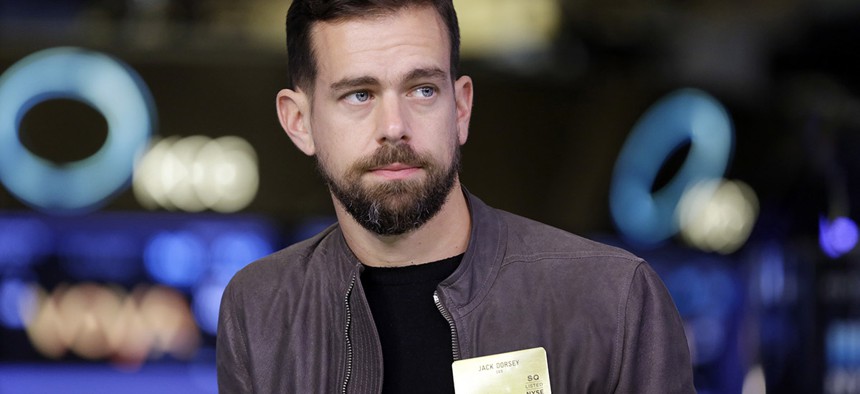Twitter, Square CEO Jack Dorsey on the Future of Credit Card Security

Square CEO Jack Dorsey Richard Drew/AP
Near field communications and biometrics can be more convenient for customers, Dorsey says.
Twitter has been the subject of scrutiny in Washington recently, especially following reports that fake social media accounts were spreading pro-Russian messages. Earlier this month, Sen. Tom Carper, D-Del., asked the company's chief executive in an open letter to explain how the site was cracking down on so-called "cyberattacks."
Twitter's CEO Jack Dorsey came to Washington Monday, but not to address Carper's request. Instead, he spoke to a capital markets conference about his other company, the payment processing business Square.
Asked for predictions about the future of payment security, Dorsey told an audience "security is not an endpoint, it's an evolution."
» Get the best federal technology news and ideas delivered right to your inbox. Sign up here.
Square, which got its start issuing credit card readers to small businesses who previously only accepted cash, now has near field communication readers that accept chip cards and mobile-device based systems such as Apple Pay and Android Pay. For Square, Dorsey explained, moving to authenticated payment systems is a way to "make sure our customers are trusting us as a way to run their business ... we all need to work together to make sure we're evolving people to more secure systems."
Those systems have been an evolution from old magnetic stripe cards, Dorsey explained. Aside from reducing the potential for fraud, authenticated systems involving near field communication, and Apple Pay's thumbprint-based biometric step is faster than swiping or even inserting cards into a chip reader.
He said Square's readers take about four seconds to process a payment, compared to 10 seconds for most chip readers. And with biometrics-supported payments, "you don't actually have to have a signature at all ...so we want to move more people towards that," and more toward software-based payment systems, he said.
NEXT STORY: Geospatial-as-a-service isn't far off





